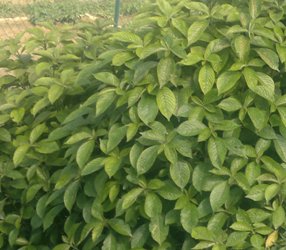
Acupuncture and Herbal Treatment Autism Neuro Acupuncture Treatment
|
Email your question about disease Here |
Bahasa Melayu Version-Akupunktur Rawatan Akar Kayu Cina Autistic Acupuncture and herbal treatment Migraine Acupuncture herbal treatment Backache Lumbago slipped -disc herbal treatment Cancer Treatment with Neuro Acupuncture and Herbal Medicine,Lung Preventition, Breast Enlargement Alzheimer's early treatment and cure Women alternative treatment, women alternative acupuncture and Herbal Treatment Women medical , medical for women problem, Herbal Treatment, Women's Site Anaemia Acupuncture Treatment and Herbal Treatment, Red blood count Low Allergyherbs Acupuncture and Herbal Treatment Kuala Lumpur Malaysia kidney treatment herbs,kidney news, kidney failure acupuncture Herbal
|
ACNE
Acne is a common skin disorder characterized by clogged pores and pimples. More than four out of five people between the ages of 12 and 24 develop acne at least once. While the disorder is often associated with teenagers, it can affect people of all ages. It's not uncommon for acne to occur in people in their 20s and 30s. And, some people continue to have acne in their 40s and 50s. Some adult women experience mild to moderate acne due to hormonal changes associated with pregnancy, their menstrual cycles, or starting or stopping birth control pills. Acne is rarely a serious medical condition, but it often causes emotional distress and can lead to scarring of the skin. With the right treatment, you can often keep acne under control. Measures also can be taken to reduce scars left by acne.
The acne period
Modern science has finally caught up with what women have been saying for ages: Acne rises and falls with the menstrual cycle.
A new study found that the skin breakouts can follow the same or a similar 28-day cycle as the menstrual period, flaring just before bleeding starts, and calming down soon after bleeding begins.
How Does Acne Develop?
Sometimes, the hair, sebum, and skin cells clump together into a plug. The bacteria in the plug causes swelling. Then when the plug starts to break down, a pimple grows.
There are many types of pimples. The most common types are:
- Whiteheads. These are pimples that stay under the surface of the skin.
- Blackheads. These pimples rise to the skin's surface and look black. The black color is not from dirt.
- Papules. These are small pink bumps that can be tender.
- Pustules. These pimples are red at the bottom and have pus on top.
- Nodules. These are large, painful, solid pimples that are deep in the skin.
- Cysts. These deep, painful, pus-filled pimples can cause scars.
What Cause Of Acne?
Causes of acne are many which bring intolerable effects to skin. Hormone imbalance, genetic inheritance, improper shedding of dermal cells, plugged skin pores coupled with excessive production of sebum from the sebaceous gland are some major culprit.
During puberty, there are numbers of hormonal changes that occur in the body notably an increased production of sex hormones like estrogen, estradiol and androgens. Androgens stimulate the production of oil in the sebaceous glands, which tends to block the skin pores thus the harmless skin bacteria present on the skin gets entrapped in the deeper layers of the skin.
White blood cells will destroy the bacteria within the infected skin pore, the results is an accumulation of skin debris, toxic substances produced due to chemical reactions, fluids and dead bacterial cells. Inevitably the skin will form pustules or pimples and whiteheads or blackheads. Furthermore, the skin is redness, swelling, localized inflammation and release of heat.
While acne was commonly seen on teenage boys or girls, it still occur in babies or adults as well. Genetics exert an important influence on acne, it is likely if your parents have suffered from extensive acne problems you might also suffer from it. Beside, Retention Keratosis also cause acne. This happens because of improper shedding of the skin lining due to which the skin pores get blocked. The blocked skin pores containing dead cells serve as a medium for bacterial growth, hence, the development of acne.
Acne most visible external symptoms are pimples, papules, whiteheads, blackheads. In severe cases, acne cysts or lesions are also noticed, they are mostly found in the face, neck, upper shoulders, chest and the back.
WikiTole : https://thetole.org/wikitole/
Online Shop : www.thetole.org/shop
Online Consultation : www.thetole.org/shop/consultation/
The Star Newspaper: People from all over the world queue to see a famous acupuncturist who has made a name for himself in the world of traditional complementary medicine.. more |
